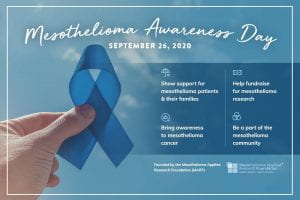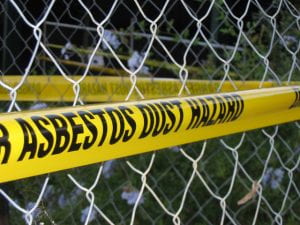
Between the 1920s to 1980s, the use of asbestos was at an all-time high in the United States. From construction to the military, asbestos was utilized in a variety of different industries. Unfortunately, this abundant usage has led to the discovery of some serious health complications. Asbestos is a known human carcinogen and people who closely worked with this naturally occurring mineral are facing the consequences. One of the most common diseases associated with asbestos exposure is mesothelioma cancer, and it continues to be diagnosed to this day. With the United States not fully banning usage of asbestos, there seems to be no end in sight of its damaging effects.
What Is Asbestos?
As previously mentioned, asbestos is a mineral that is found in abundance across the United States. It’s known for its tensile strength, sound absorption and heat resistance, making it an unmatched additive at the height of its usage. Products such as flooring tiles, roofing tiles and insulation incorporated asbestos, because in the event of a fire, it could slow the burning process. This was also true when it came to usage in the military. The Navy incorporated asbestos in different areas of ships such as the boiler room and sleeping barracks. Asbestos was also great because it doesn’t degrade easily in water, making it a no brainer for use in ships. With that being said, when asbestos does degrade is when it can cause the most harm to the health of humans.
Asbestos Exposure And Health Complications
Asbestos that is degrading or damaged can release fibers into the air. These needle-like microscopic fibers can be inhaled or ingested by humans, causing damage to our internal organs. They get embedded in the linings of our lungs, heart and abdomen where they cause inflammation and scarring to occur. Over the course of 10 to 50 years, tumors may develop and this can lead to the diagnosis of mesothelioma cancer. Symptoms of this disease are minimal, and often mimic those of less severe illnesses. Coughing, shortness of breath, lack of appetite, chest pain and fever are all symptoms of mesothelioma, but unfortunately, when symptoms do appear, the disease has usually progressed into a later stage. Another disease that asbestos exposure can lead to is asbestosis, a chronic lung condition that heightens the risk of developing mesothelioma.

Who Does This Disease Affect?
The two largest populations that are diagnosed with mesothelioma are military veterans and construction industry professionals. The reason for this is that servicemen and women who worked on Navy ships and military bases were directly in contact with asbestos-containing materials (ACMs) on a daily basis, as is true of the majority of construction professionals. Working with ACMs without the proper protective equipment is typically how someone will end up being diagnosed with mesothelioma. Asbestos fibers can cling to clothing and stay airborne for several hours, so for those working with these materials everyday, exposure is extremely prevalent. While rules and regulations have gotten better surrounding asbestos exposure, these two groups are still disproportionately affected, many of whom still are unaware of the dangers of asbestos despite there being more research.

Why Is Asbestos Not Fully Banned?
While asbestos usage in the United States has become more regulated, it is still not fully banned. Asbestos is allowed in up to 1% of certain products and plays a key role in the chlor-alkali (chlorine) industry. As of April 2019, a “final rule” regarding asbestos usage had been issued by the Environmental Protection Agency (EPA) detailing more regulations to limit exposure. These regulations were as followed:
- The public is protected from uses of asbestos that are no longer on the market and are not covered under any other laws.
- The EPA is not allowing new uses of asbestos
- Uses of asbestos covered under the 1989 partial ban will stay banned.
Researchers, experts and the public have been upset with this new ruling, as it still does not take into consideration the legacy usages of asbestos as well as all of the preexisting ACMs that are across the country to this day. There are currently 67 countries with full asbestos bans and it is unfortunate that the United States continues to let the public be harmed from such a dangerous carcinogen.
Help Spread Awareness
September 26th marks the 17th anniversary of Mesothelioma Awareness Day (MAD). Help spread awareness by sharing information about asbestos exposure with your loved ones and educating them about the serious health dangers it poses.
